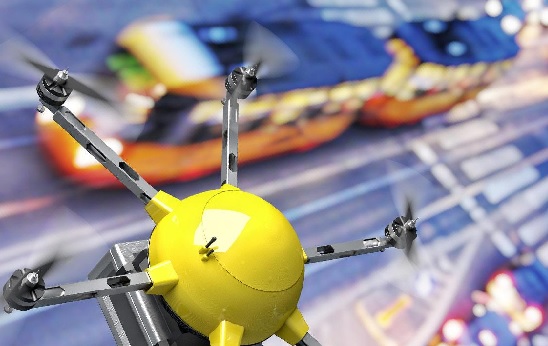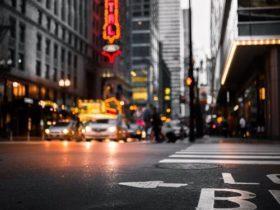Cities are the heart of the global economy, accounting for more than 80 percent of world GDP. Roads, rails, and other forms of transportation are the arteries that nourish that heart. When these become clogged or weakened, the results are severe. Businesses, residents, and cities all suffer, and the economic costs are high—as much as 2 to 4 percent of city GDP, in the form of lost time, wasted fuel, and higher costs of doing business.
Last year, McKinsey and Bloomberg New Energy Finance published An integrated perspective on the future of mobility, which outlined four trends that are rapidly changing passenger transport: electrification, autonomy, connectivity, and sharing. The same four trends will, to a large degree, shape the future of commercial urban transport, which is the focus of this report. Commercial vehicles (CVs) contribute disproportionately to urban pollution and congestion. They are more apt to idle, make stops and starts, and block traffic. In general, they generate higher nitrogen-oxide and other emissions.
And there will likely be many more CVs on the road, given economic growth and the expansion of e-commerce (exhibit). Different solutions are emerging that could relieve the pressure. We examine six of these in detail, and consider how they can work in three kinds of urban areas: dense, developed cities like London and Tokyo; sprawling, developed cities like Los Angeles and Sydney; and dense, developing cities like Beijing and Mexico City. Autonomous commercial vehicles, for example, will likely be most attractive at first in places with high labor costs. Drones will work better in sprawling cities where there is ample space to land. Electric vehicles (EVs) can and eventually will work everywhere.

The case for change
Traffic is bad, and getting worse. In London, a trip that took 20 minutes in 2012 takes almost 25 minutes now, while the average resident of Los Angeles spends the equivalent of more than two full work weeks in traffic every year. Congestion is not just annoying; it is expensive. When commercial vehicles get stuck, businesses rack up higher fuel and labor costs.
Improving these conditions will be difficult. By 2030, a billion more people will live in cities. Spending on infrastructure, on the other hand, is not keeping pace. To cope, individuals and businesses are going to have to use roads and other assets better and be ready to adopt new technologies.
Potential solutions
To improve urban commercial transport, we have identified solutions all along the delivery value chain (see infographic). We evaluated each one for its financial value, social value, and feasibility. A number of these solutions, such as order grouping, route optimization, and night deliveries, could be implemented more or less immediately. Others, such as the use of droids, robots, and autonomous ground vehicles (AGVs), are realistic, but likely years away from large-scale deployment. Of all the solutions we studied, two stand out; both already exist but could be deployed much more widely, to great effect.
Urban consolidation centers (UCCs) are locations, typically on the outskirts of cities, where deliveries are brought, sorted, and then dispatched. Goods from multiple suppliers can be consolidated into fewer shipments, because it is possible to optimize loads and truck sizes. While UCCs have been around for years, success has been spotty.
Second, night deliveries shift traffic to off-peak hours; this reduces congestion during the day and allows suppliers to use bigger trucks, reducing the number of deliveries. In dense, developed cities, we estimate that shifting to night could speed up commercial deliveries by half and cut costs by up to 50 percent. For all the potential, though, the use of night deliveries in cities is limited, largely because of noise concerns; eventually, the use of EVs could help because they are quieter—and would also sharply reduce related emissions.
Four other approaches look particularly promising—EVs, load-pooling, parcel lockers, and AGV lockers—and we discuss these in depth. We estimate that these six solutions could reduce tailpipe emissions by up to 30 percent (and eliminate them altogether through electrification) while also cutting costs per parcel by 25 to 55 percent.
All the solutions make sense in and of themselves; it is in working together, however, that commercial transport in cities could be truly transformed. Different combinations work for different kinds of cities, different customers (B2B versus B2C), and different uses (same-day versus traditional delivery). For example, using electric vehicles to deliver to and from UCCs at night optimizes load utilization and speeds up delivery while also cutting costs and pollution. While we believe these approaches, both alone and in combination, will be good for the global economy and environment, five sectors in particular face challenges to their existing revenue and operating models: retail, logistics, the public sector, automotive, and energy. If the sectors adapt creatively, however, they could reap substantial benefits.
Easing the burden of urban traffic will require new technologies, new business models, and new regulations. But it will also need new mind-sets—among businesses, governments, and consumers—to imagine a future that is different and better than the present. For those sitting in traffic or stuck behind a stopped delivery truck, such irritants may seem as inevitable as death and taxes. We are more optimistic.
Download the full report on which this article is based, An integrated perspective on the future of mobility, Part 2: Transforming urban delivery (PDF–3,561 KB).















